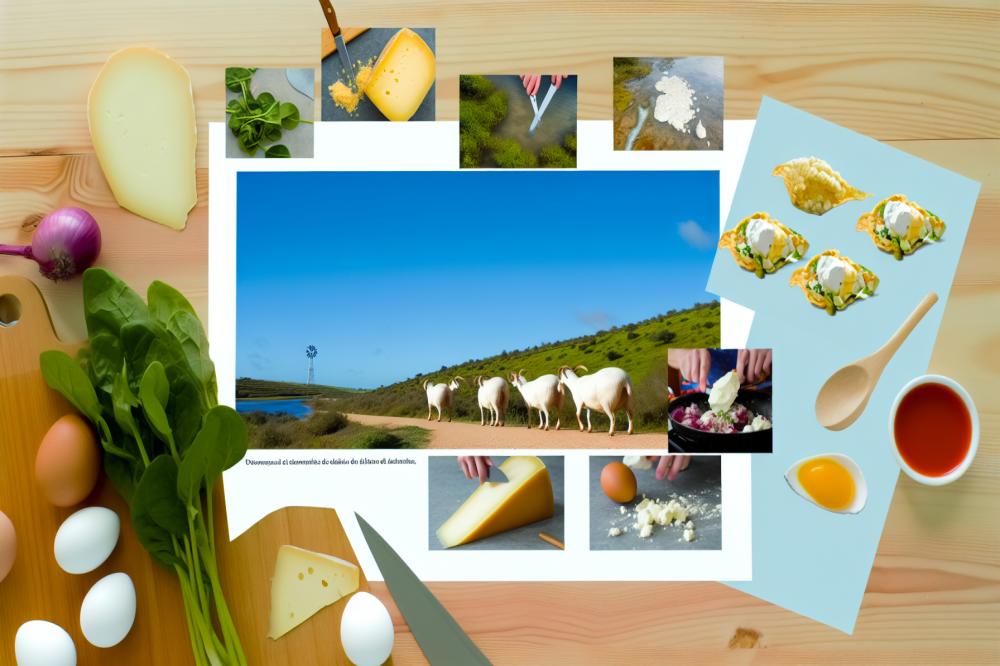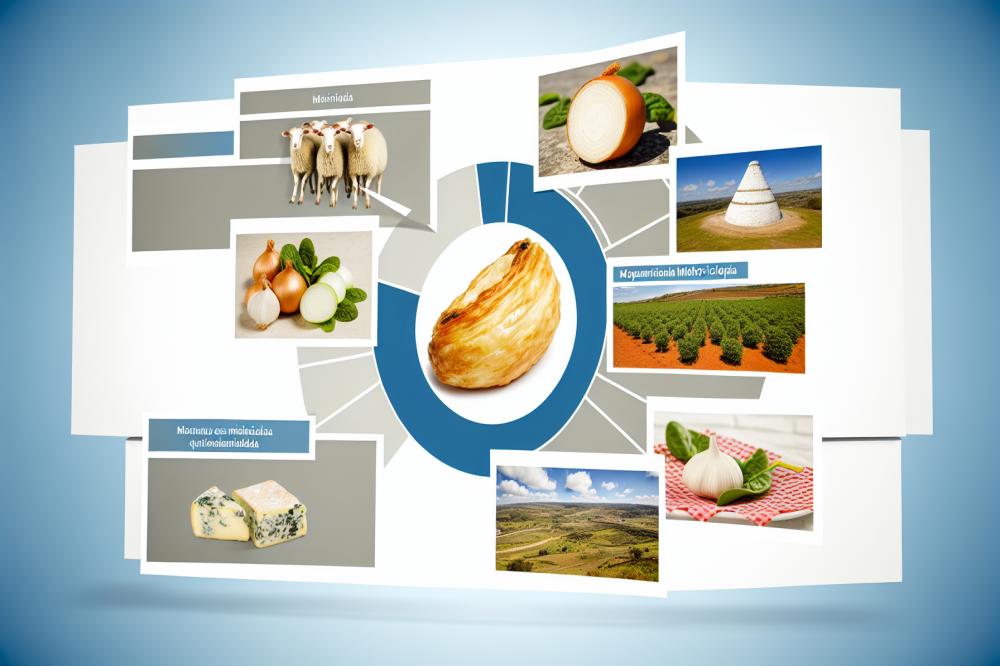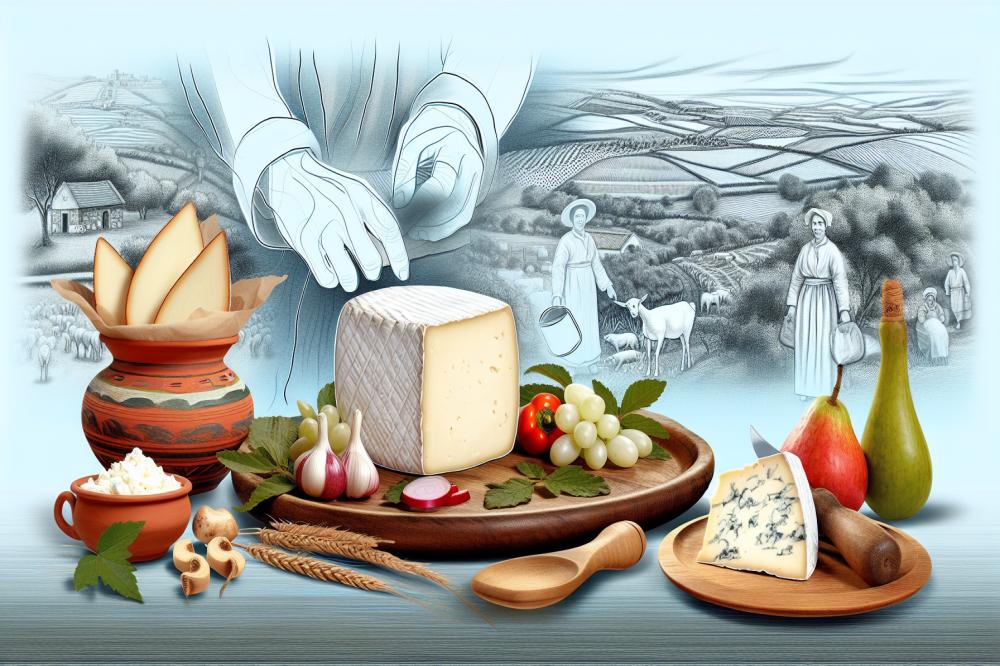How cheeseofchoice.org/queijo-branco-da-beira-baixa-a-fresh-cheese-worth-trying”>Queijo de Nisa Captures the Essence of Alentejo
Queijo de Nisa is more than just cheese; it is a symbol of the region’s rich culinary landscape. This traditional Portuguese cheese originates from the Alentejo region, where the sun-drenched hills play a crucial role in its creation. Made from sheep’s milk, it has a creamy texture that delights the palate. Each bite tells a story, reflecting the agricultural heritage that has flourished for centuries.
Its history dates back to Roman times, when local farmers crafted cheese as a way to preserve milk. For generations, families have passed down the art of making this cheese, which is recognized for its distinct flavor and aroma. Each wheel is hand-made, showcasing techniques that are deeply rooted in tradition. The production process involves meticulous attention to detail and respect for the land, ensuring a product that resonates with authenticity.
Flavor profiles vary, with hints of earthy undertones and subtle tanginess. These characteristics mirror the Alentejo landscape, which is dotted with sprawling olive groves and aromatic herbs. Chefs and food lovers value Queijo de Nisa not just for its taste, but also for its ability to connect people to the region’s culture. Sharing this cheese has become an integral part of community gatherings and celebrations.
In essence, Queijo de Nisa embodies what Alentejo stands for: a blend of tradition, flavor, and a strong sense of place. It invites both locals and visitors to savor the simplicity of rural life. With its rich history and vibrant taste, this cheese truly captures the heart and soul of the Alentejo region.
Queijo de Nisa

Locals hold Queijo de Nisa in high regard. This artisanal cheese has a distinct flavor profile that reflects its Alentejo roots. The taste combines a mild buttery quality with nutty undertones, creating a delightful experience for the palate.
The texture is firm yet creamy, making it easy to slice. As you take a bite, it melts smoothly in your mouth. The cheese often pairs well with local bread or olives, enhancing its rich flavors even further.
Production Process
Crafting this cheese involves traditional methods passed down through generations. Producers begin by using the milk from local sheep breeds, which thrive in the Alentejo pastures. These sheep graze on a diet of unique grasses and aromatic herbs, contributing to the cheese’s unforgettable taste.
After milking, the milk is heated gently. Then, natural rennet is added to encourage curd formation. The curds are cut and stirred, then drained to remove excess whey. Once shaped into wheels, they undergo a careful aging process. Maturing in cool, humid cellars allows the flavors to develop fully.
Traditional Methods and Local Sheep Breeds
Cheese-making in Alentejo is a labor of love. Many farmers still practice age-old techniques, staying true to their heritage. There are few shortcuts in the process. Each step is handled with care and respect for the craft.
Local breeds play a significant role in the character of the cheese. The “Sarda” and “Merino” sheep are commonly utilized. These breeds not only produce high-quality milk but also adapt well to the region’s environment. Their milk results in a product that is not easily replicated elsewhere.
Community ties are strong among cheese makers. They often learn from one another and share secrets that enhance their art. This collective spirit strengthens the quality and tradition of Queijo de Nisa.
Alentejo

Alentejo is a vast region in southern Portugal. Its landscape is marked by rolling hills, vast plains, and ancient cork oak trees. The Mediterranean climate brings hot, dry summers and mild winters. This weather plays an important role in local agriculture. Farmers cultivate a range of crops here, such as wheat and olives. Cattle and sheep graze on the lush pastures. Their milk is essential for cheese production.
Queijo de Nisa draws from this rich environment. The cheese-makers use whole sheep’s milk, which gives it a robust flavor. Aging also contributes to its character, as it develops a creamy texture and a slightly tangy taste. Artisan methods are often used in production. From the work of local shepherds to skilled cheesemakers, tradition is vital in each step.
Besides cheese, Alentejo offers other delicious products. Olive oil is another star of this region. Its quality is renowned, with many producers pressing olives from ancient trees. Bread baked in traditional wood-fired ovens is a staple. Often it is served with cheese or spreads. Local sausages, such as chouriço, add a smoky flavor to meals. Many people enjoy pairing these with wine from nearby vineyards.
Culinary traditions run deep in Alentejo. Recipes have been passed down through generations. Simple ingredients make the dishes stand out. At regional festivals, locals celebrate food and culture together. Community and sharing create a sense of belonging. This spirit continues to shape local dining experiences.
The flavors of Alentejo combine beautifully. Cheese, bread, wine, and olive oil create a feast for the senses. Together, they highlight the agricultural bounty and cultural richness of the region. Each bite tells a story of history and craftsmanship.
Recipe: Queijo de Nisa and Spinach Stuffed Pastry

Ingredients:
- 250g Queijo de Nisa
- 300g fresh spinach
- 1 onion, finely chopped
- 2 cloves garlic, minced
- 200g puff pastry
- 1 egg, beaten
- Salt and pepper to taste
Instructions:
- Start by preheating the oven to 200°C (390°F).
- In a pan over medium heat, sauté the onion and garlic until they turn golden brown.
- Add the fresh spinach and cook until it wilts down. Season this mixture with salt and pepper.
- Once removed from heat, crumble in the cheese and stir to combine.
- Roll out the puff pastry and cut it into squares. Fill each square with the spinach and cheese mixture.
- Fold each pastry over and seal the edges well, then brush the tops with the beaten egg.
- Place on a baking sheet and bake for 15-20 minutes or until golden brown on top.
- These pastries are best served warm as a delightful appetizer or snack.
Nutritional Information:
- Calories: Approx. 250 per serving
- Protein: 10g
- Carbohydrates: 15g
- Fat: 16g
Health Benefits:
This dish provides a good source of protein, thanks to the cheese and spinach. Cheese is also an excellent source of calcium, which is important for strong bones and teeth. Fresh spinach delivers a variety of vitamins and minerals, adding to the nutritional value of the meal. Using local ingredients means you enjoy fresh flavors, promoting a sustainable lifestyle while savoring the essence of Alentejo cuisine. Emphasizing these benefits can make meals both tasty and nutritious.
Final Thoughts

Queijo de Nisa offers a special tasting experience that goes beyond flavor. Each bite captures the heart of Alentejo, reminding us of the land’s rich traditions. This cheese stands out as a testament to the region’s pastoral lifestyle and culinary heritage.
People who enjoy this delicacy also connect with the culture surrounding it. Families have made this cheese for generations, sharing recipes and stories that highlight community bonds. Enjoying it with a glass of local wine creates an atmosphere rich in history and friendship.
For those eager to explore culinary skills, trying to make your own version can be an exciting challenge. Studying the various methods of preparation reveals insights into Alentejo’s agricultural practices and old traditions. Delve deeper into Portuguese cuisine and discover more about its diverse offerings. Learning about regional cheeses opens doors to various flavors and pairings that enhance meals.
As you savor this delightful cheese, think about what it represents. It is more than just food; it symbolizes a culture full of warmth and connection. So, gather your ingredients and experiment with making your own cheese at home. This delicious journey not only connects you to historical roots but also fosters a love for the land of Alentejo.



